The Aestethic 'White Cube' Gallery Behind the Historical Cuckrana
Scapelab successfully overhauled Cukrarna, a former sugar refinery in Ljubljana City, Slovenia, into a new, more revolutionary space as the city's cultural infrastructure.
 The main hall of Cukrarna.
The main hall of Cukrarna.
Cukrarna itself has been established in 1828 and had changed its function several times, after experiencing a devastating fire. Starting from being a tobacco factory, textile factory, military barracks, homeless shelter, to being a halfway house for modern poets and writers who contributed to Slovenia's independence. Because it holds many historical moments and has been so deeply embedded in the minds of the people of Slovenia, this 19th-century industrial monument is also listed as a protected building.
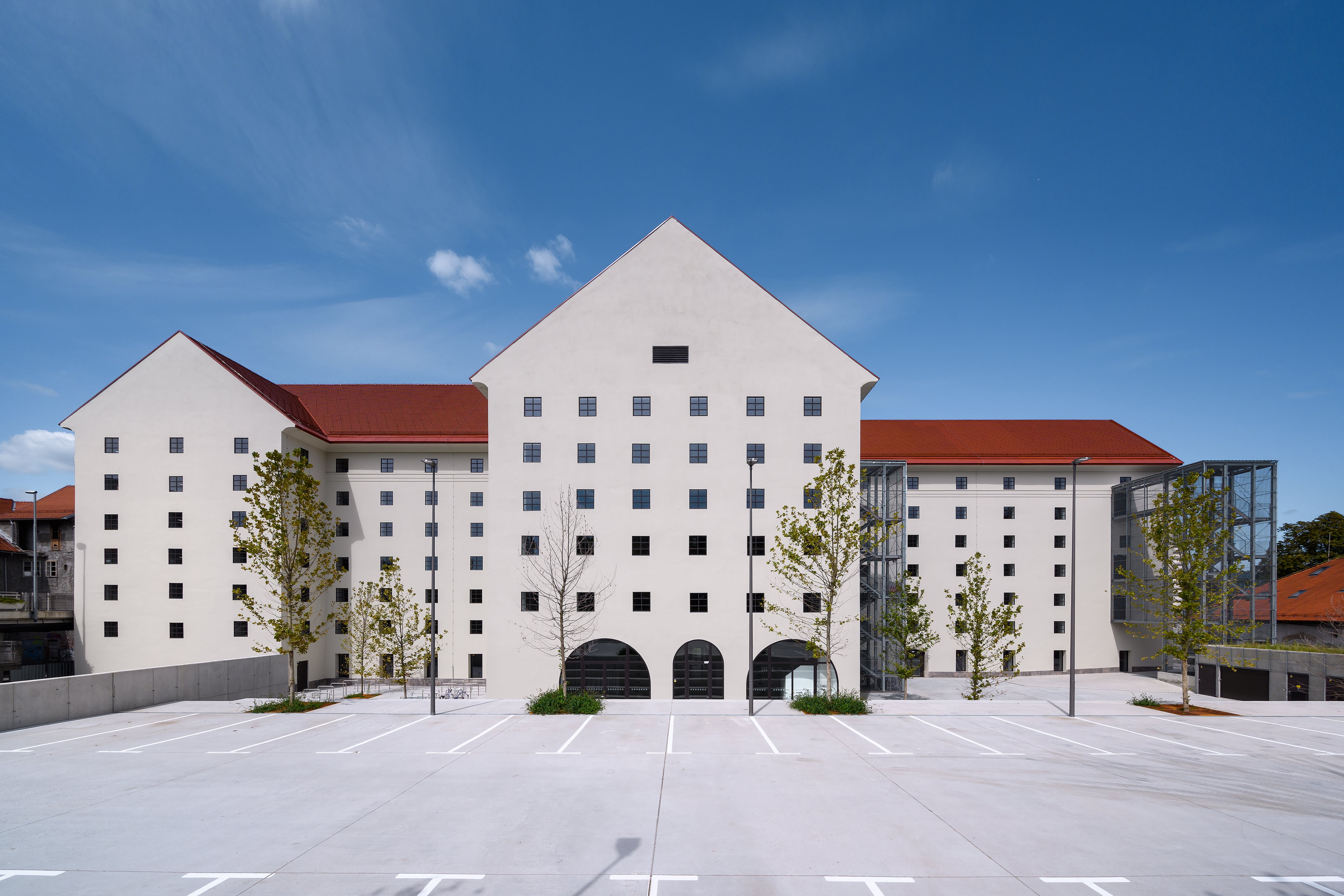 To maintain historical value, the facade of Cukrarna didn't undergo much change.
To maintain historical value, the facade of Cukrarna didn't undergo much change.
Therefore, in an international competition for the renovation of Cukrarna in 2009, Scapelab offered a design proposal that focused on processing the inner space and maintaining its old outer appearance. That goal is also contained in the concept of a multifunctional space for contemporary art that utilizes the main hall that is so tall and spacious as a container for the 'White Cube’ gallery. The floating gallery hanging from the steel roof structure then became a fascinating surprise stored behind the concrete walls of Cukrarna.
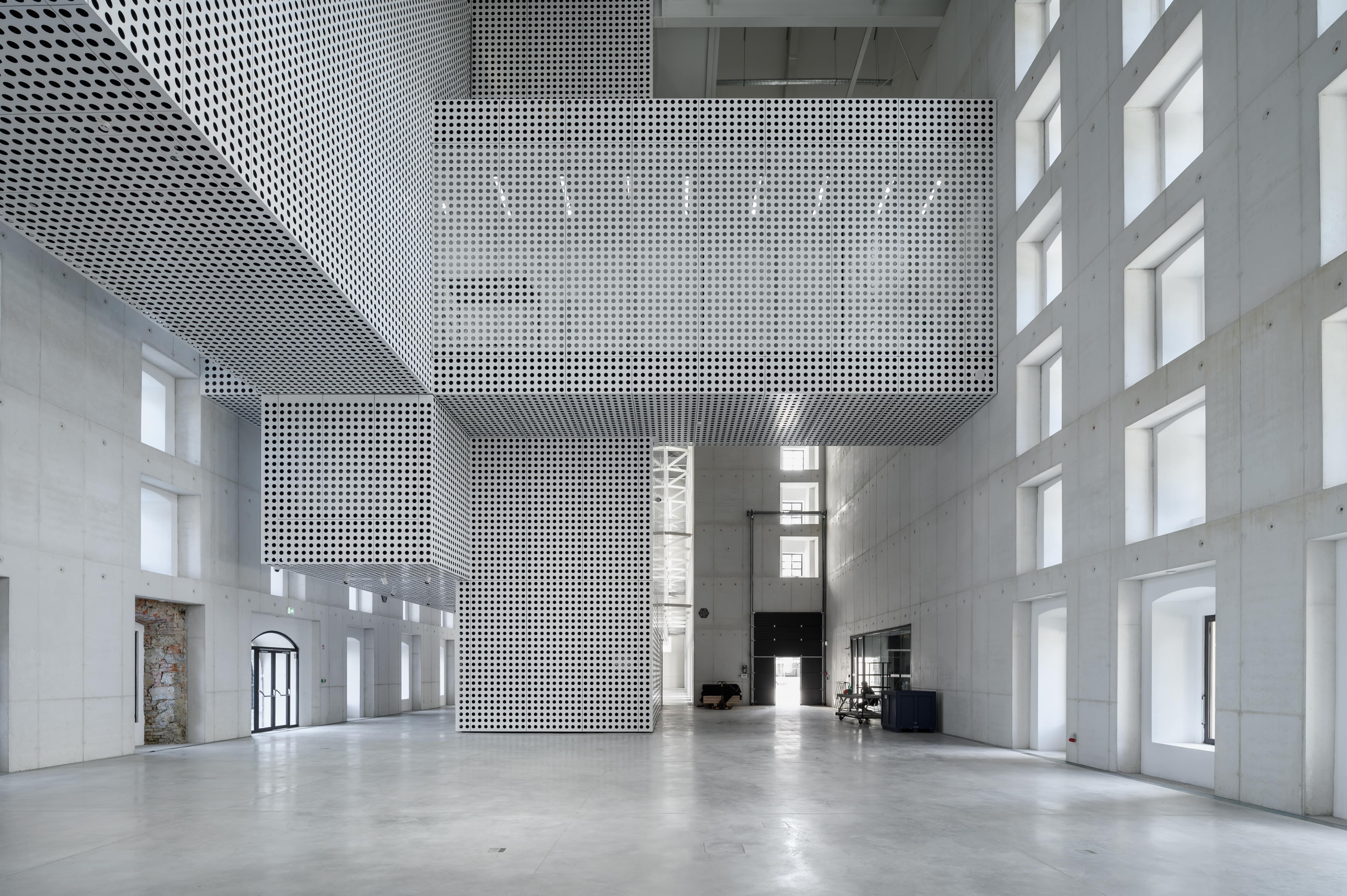 'White Cube' gallery as a renewal of Cukrarna in the context of space.
'White Cube' gallery as a renewal of Cukrarna in the context of space.
From urban public spaces, visitors can go straight into Cukrarna and feel the volume of the 'White Cube’ gallery floating without touching the historic concrete wall. The contrast between the 'White Cube’ gallery and the wall can also be seen from the hollow plates that wrap around it. Not only does it provide an aesthetic touch, but the casing is also full of many functions. Starting from as an acoustic silencer, to reduce echoes when there is a concert in the main hall, as lighting equipment, to supporting the HVAC distribution system.
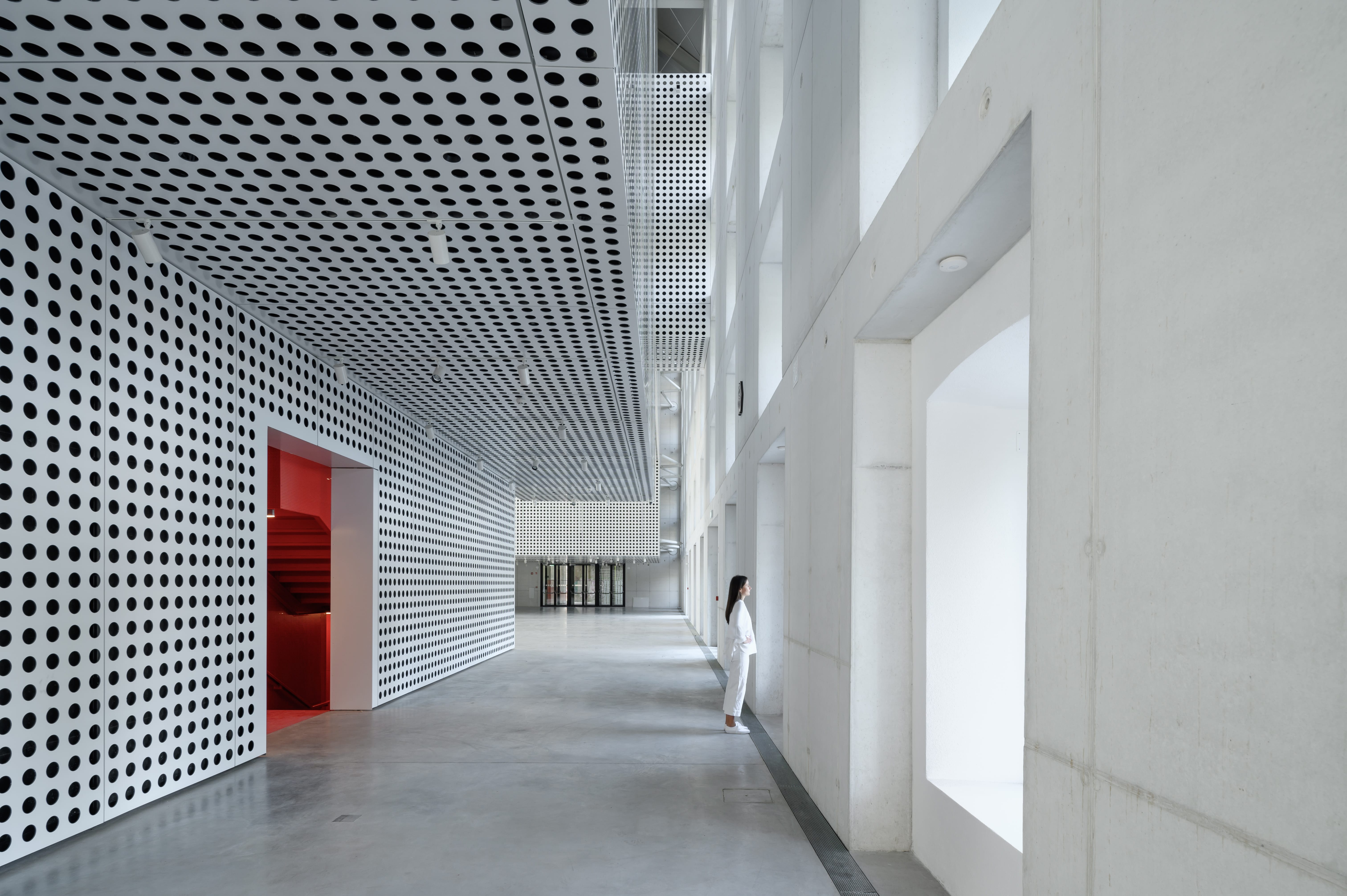 Description of how the 'White Cube'gallery is not only aesthetically present but also has the value of the function.
Description of how the 'White Cube'gallery is not only aesthetically present but also has the value of the function.
In addition, the 'white cube' gallery also contains various spaces that can be used for various purposes. An example is the transparent gallery space in the key position, which is able to offer a new perspective for visitors. Then, there are also other spaces that are usually used for educational purposes, lectures, and workshops.
As a complement, Cukrarna is also equipped with an underground area that houses several rooms for exhibition preparation, technical, lockers, and performing arts as well. Not to forget, there is one bar on the other side of Cukrarna that usually performs live music at night.
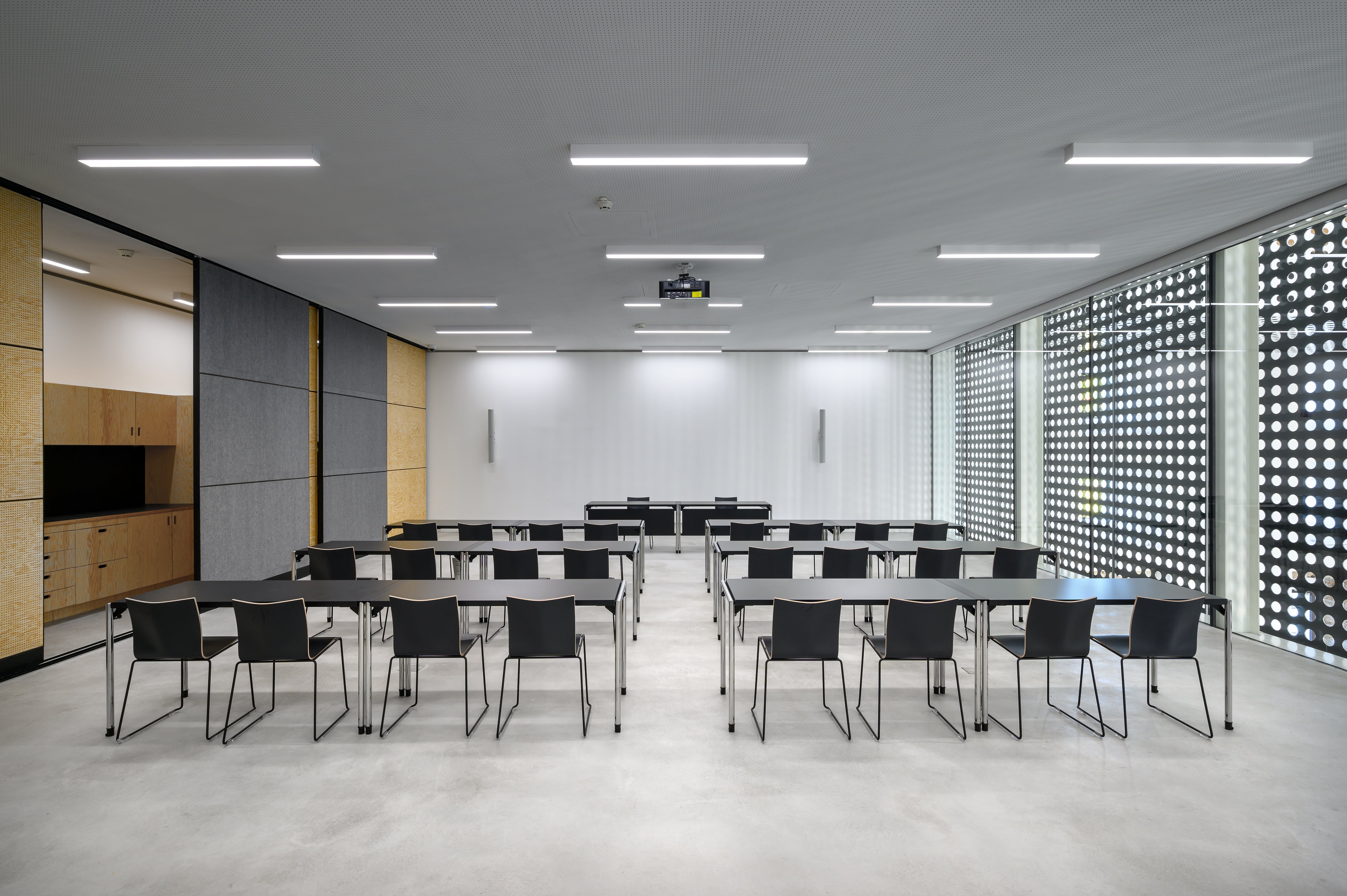 The classroom inside the 'White Cube' gallery. Classrooms that are inside the 'White Cube' gallery.
The classroom inside the 'White Cube' gallery. Classrooms that are inside the 'White Cube' gallery.
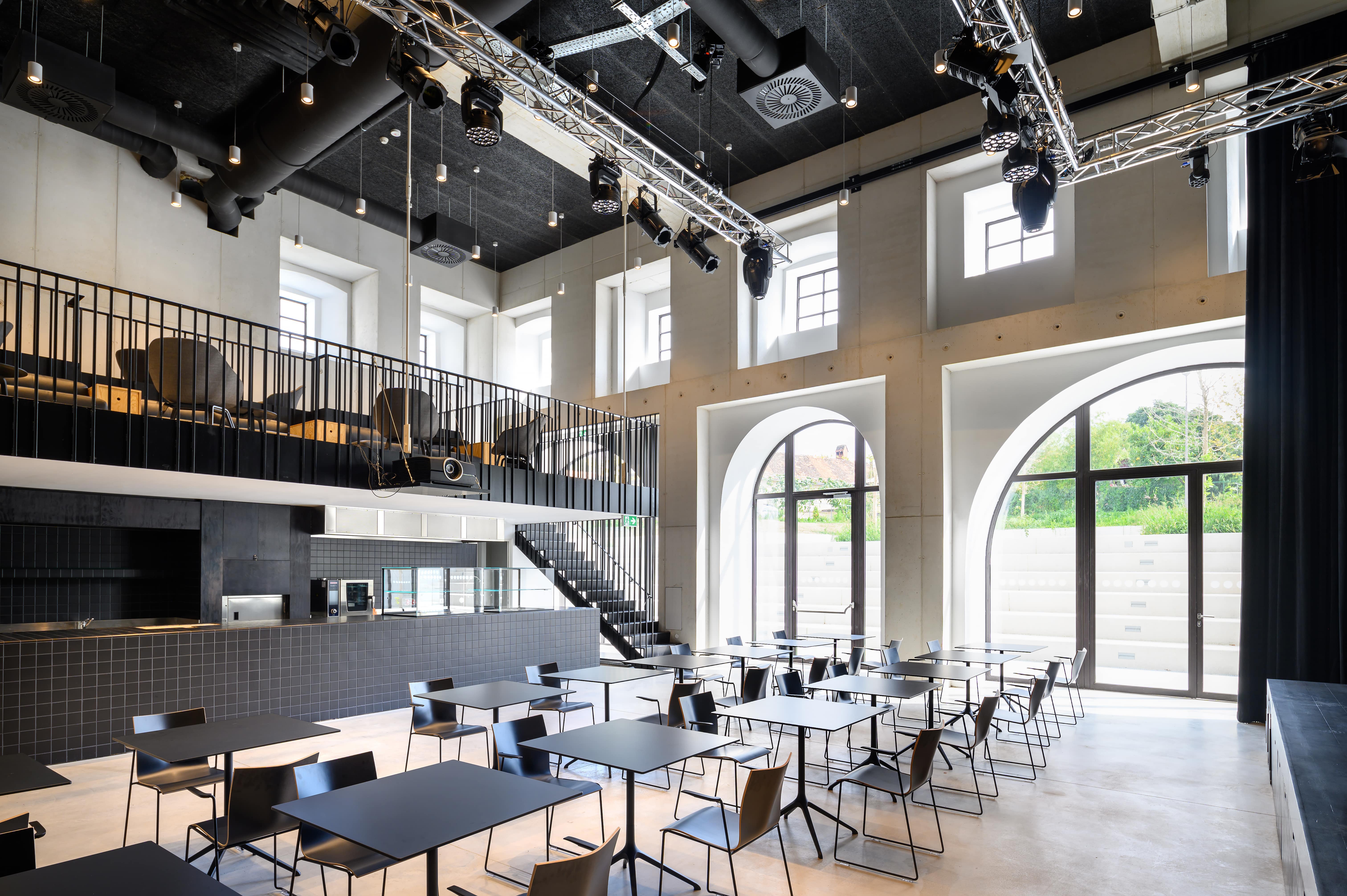 The bar plays the role of bringing Cukrarna to life through performing musing at night.
The bar plays the role of bringing Cukrarna to life through performing musing at night.
So, with the gallery's main offering of 'white cubes' and its other complements, this New Cukrarna is trying to regenerate a once derelict corner of the city. Despite building a new image on historical heritage, Cukrarna is reluctant to forget the values that have been stored so far. By doing various repetitions as a metaphor for the industrial revolution, Cukrarna wants to become a platform for new artists of the future.
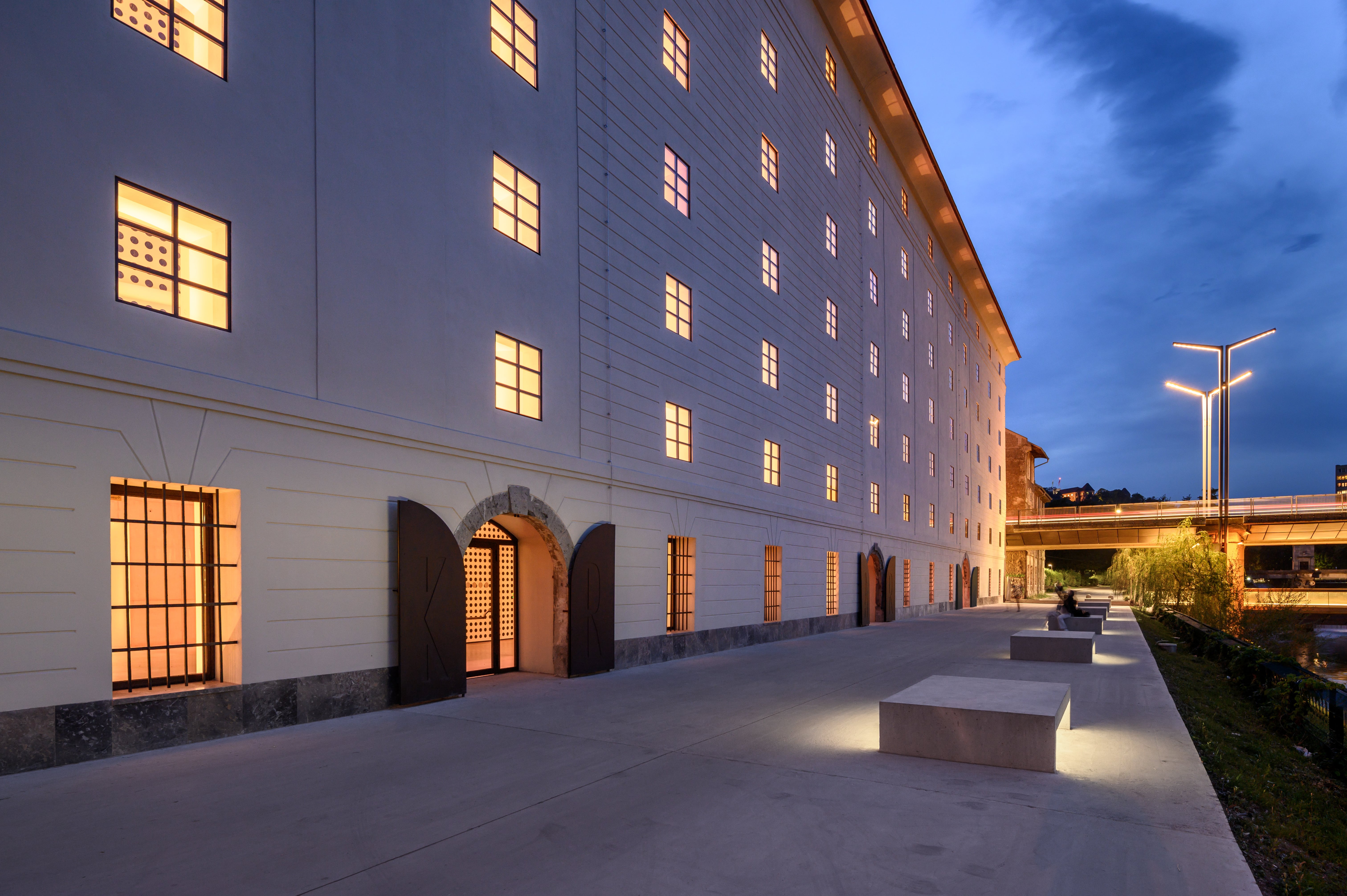 Cukrarna, which appears full of repetition in its visual, signifies a metaphor for its historical heritage.
Cukrarna, which appears full of repetition in its visual, signifies a metaphor for its historical heritage.
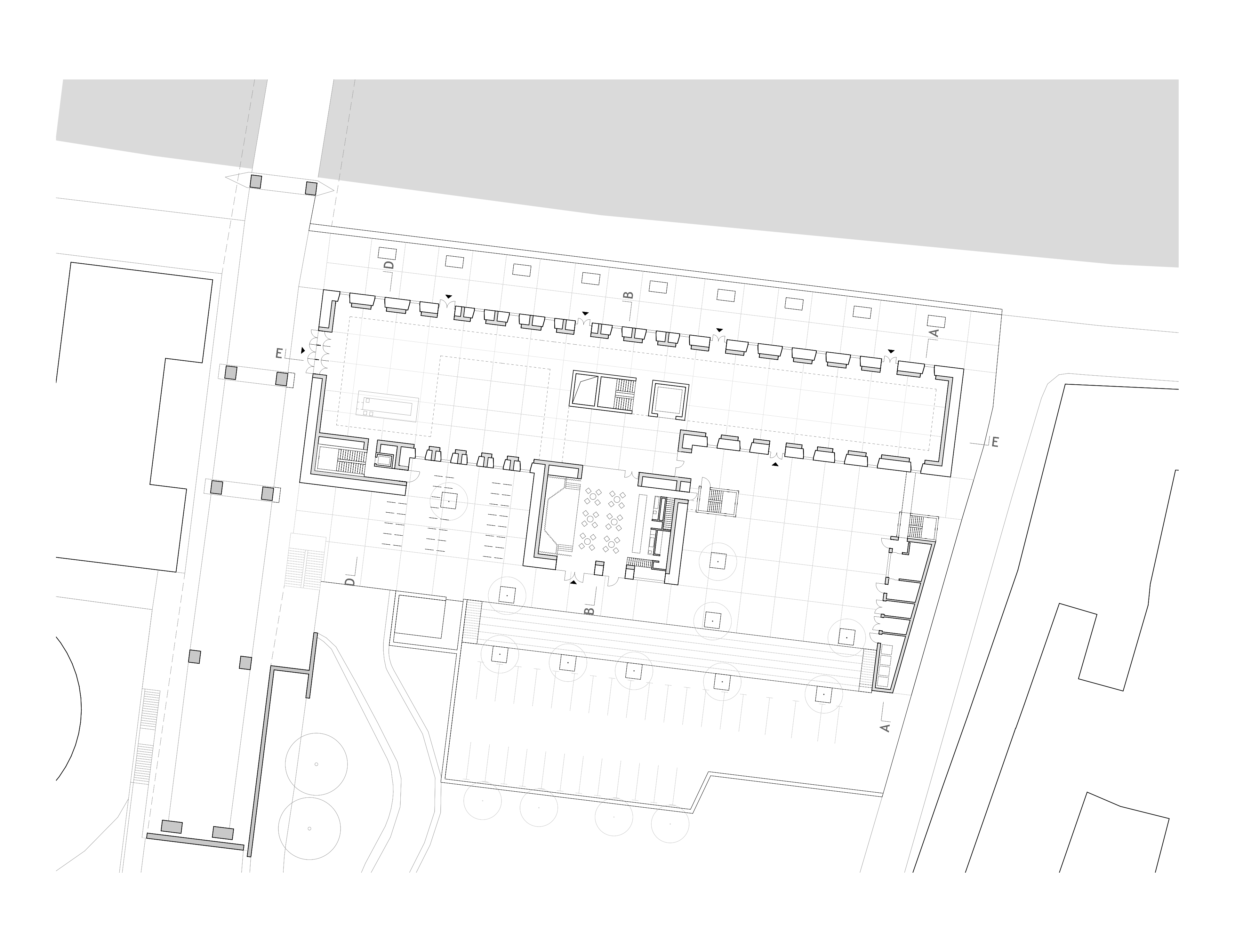 Site plan of Cukrarna.
Site plan of Cukrarna.
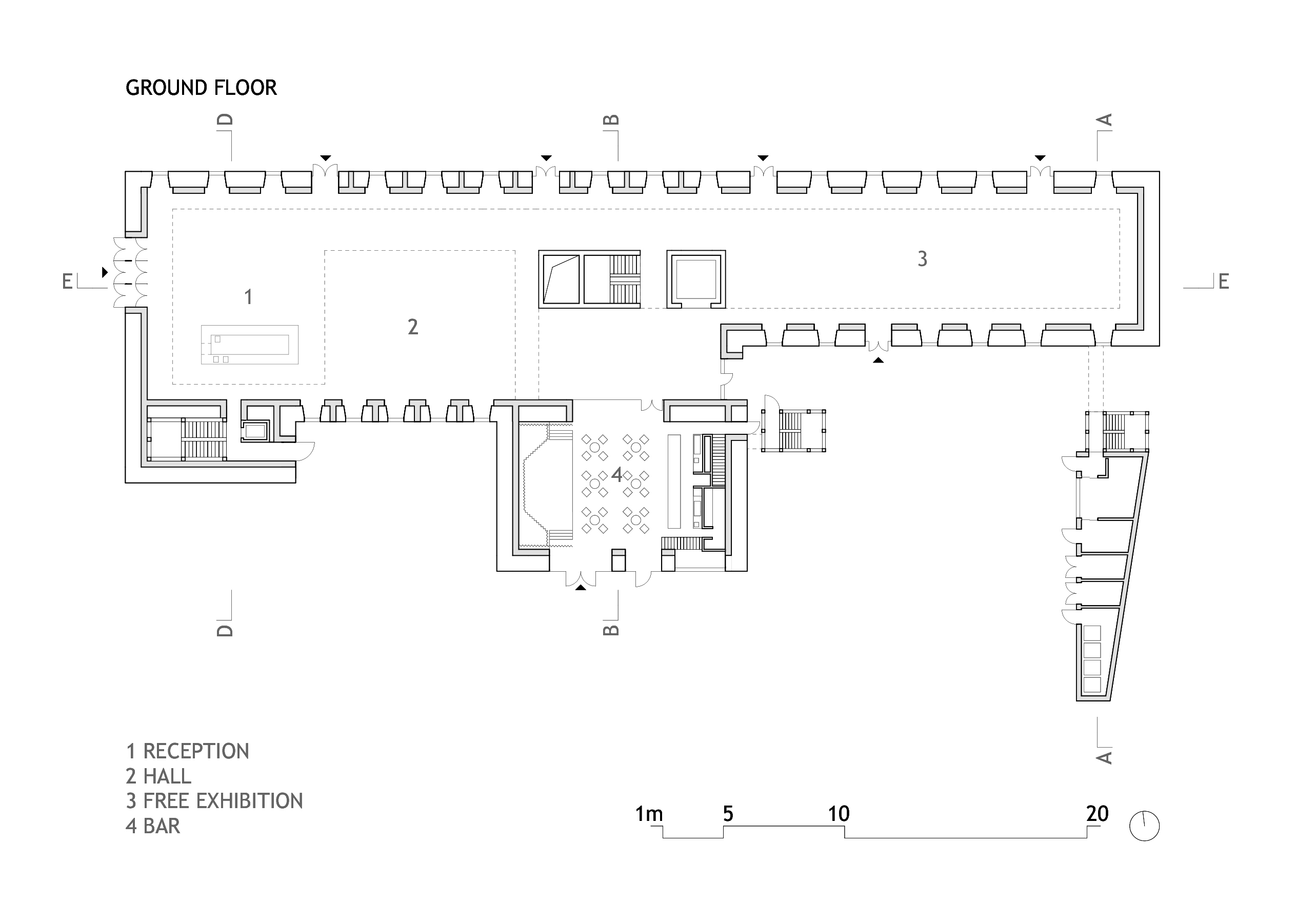 Ground floor plan of Cukrarna.
Ground floor plan of Cukrarna.

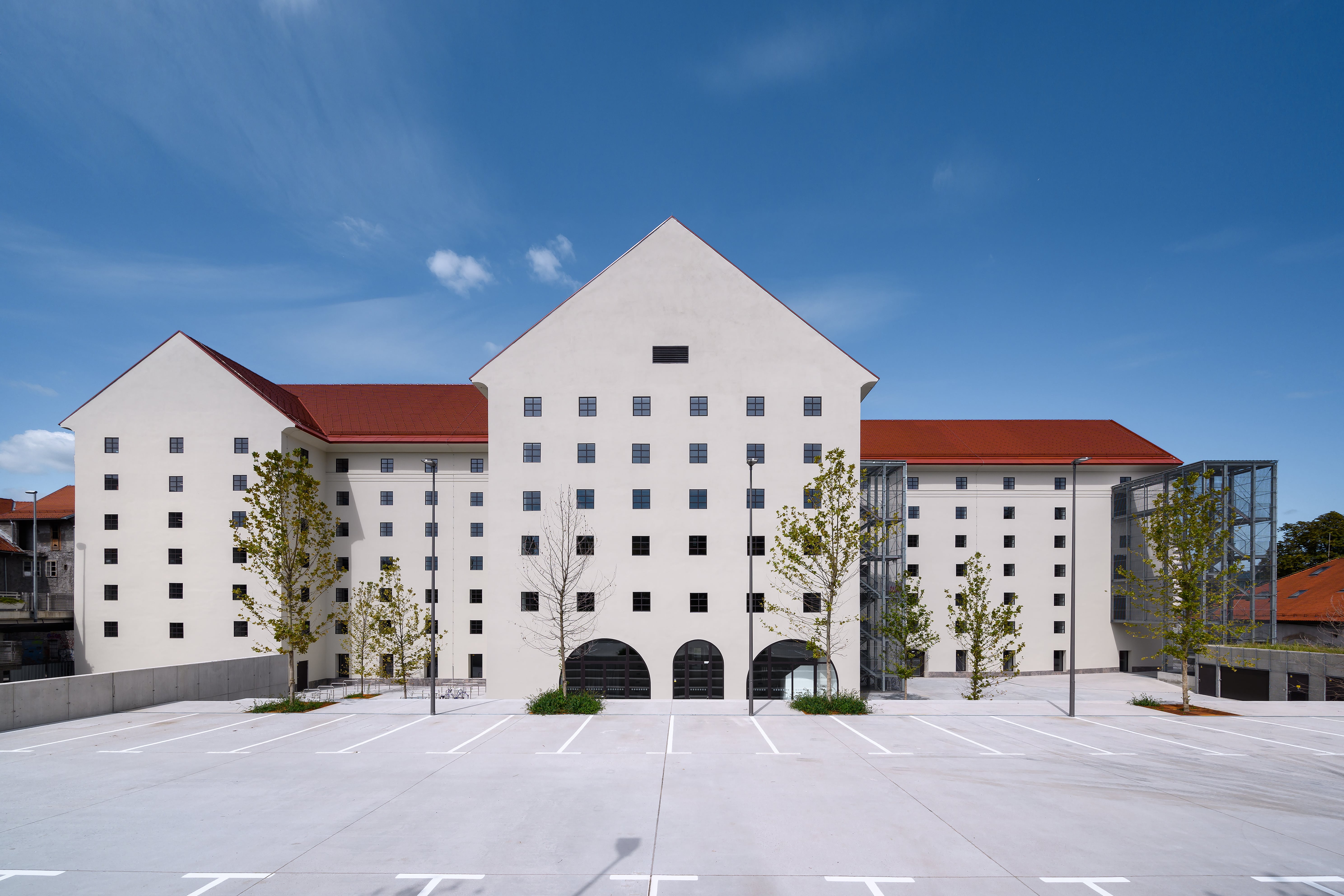



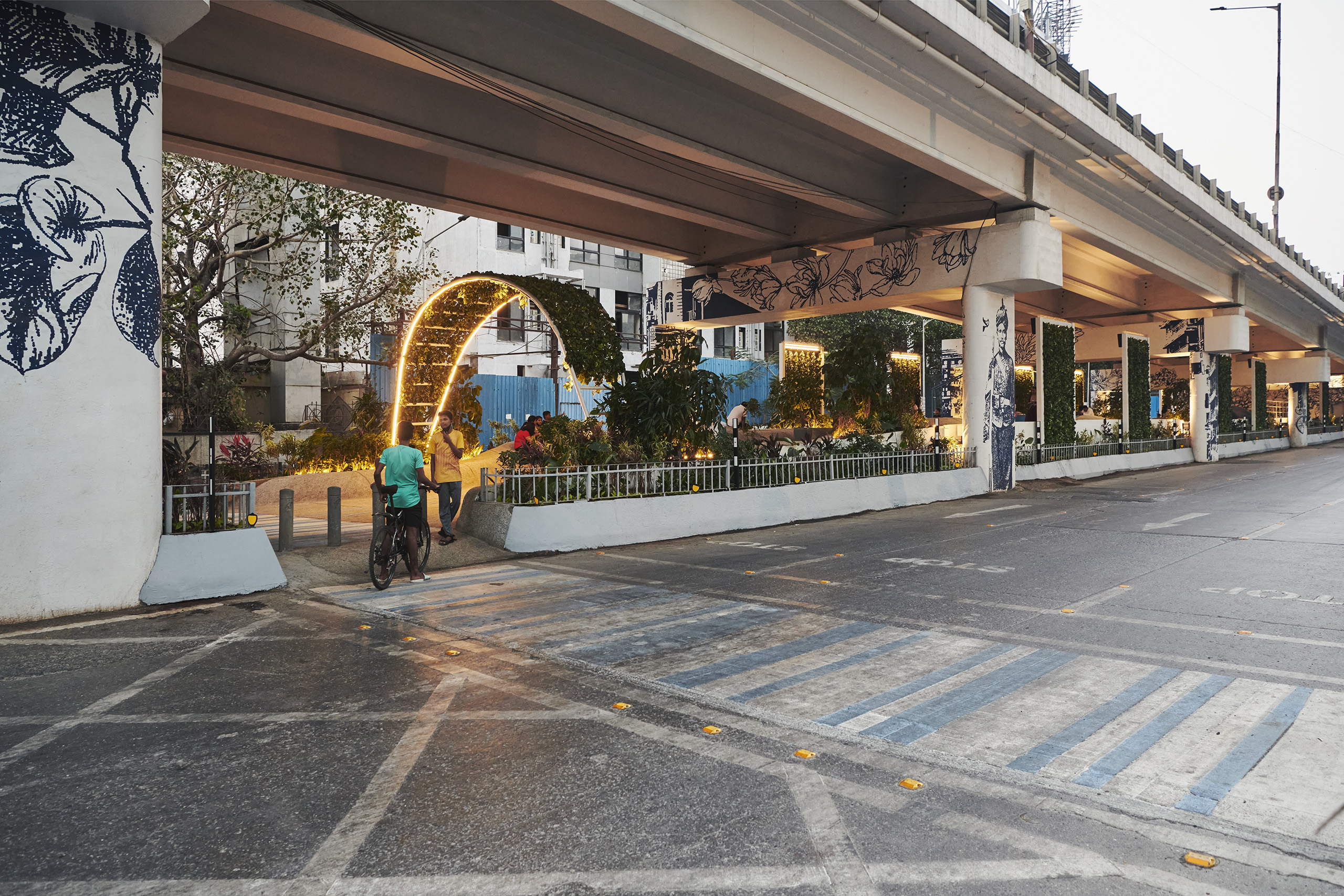

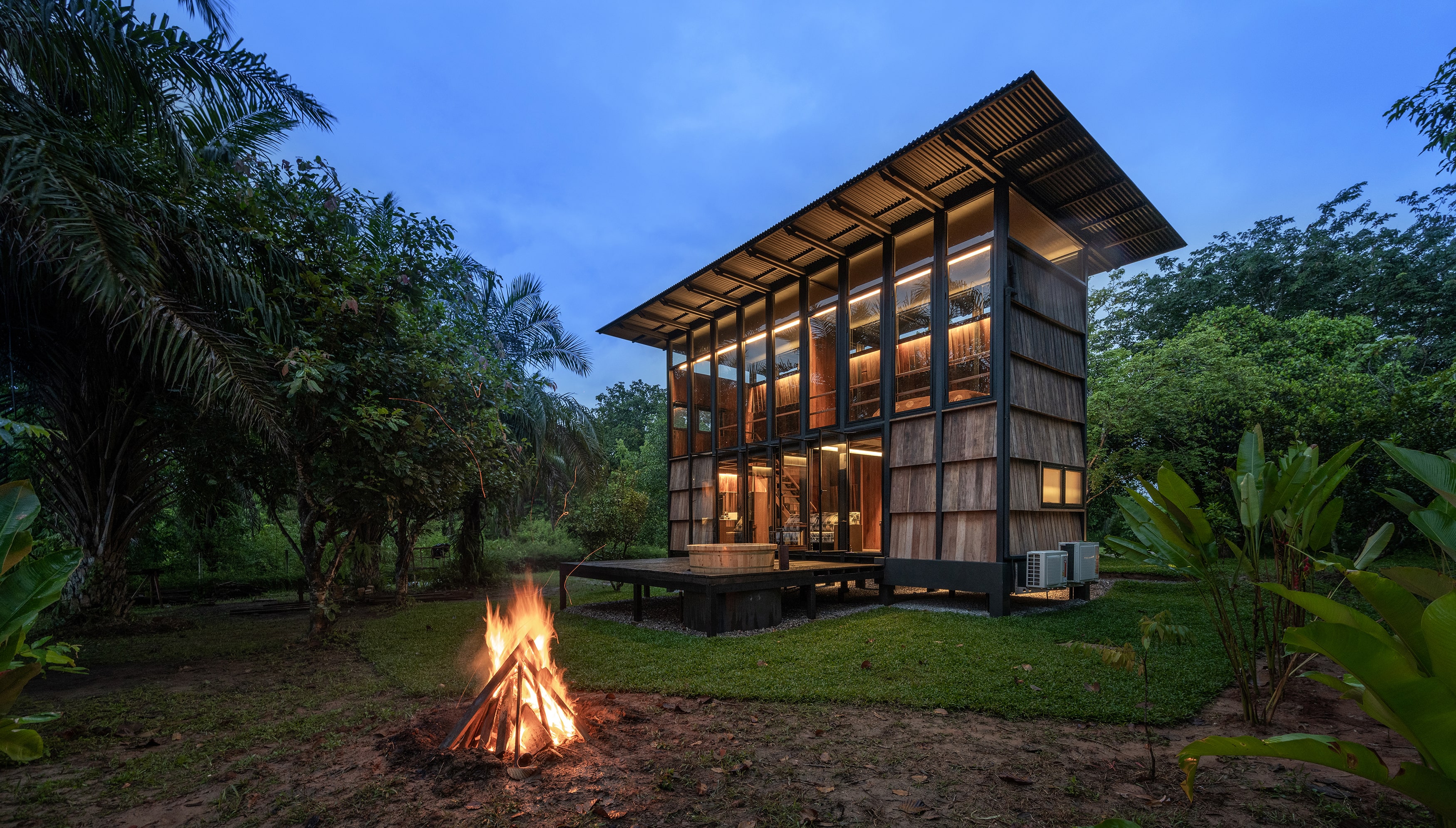


Authentication required
You must log in to post a comment.
Log in